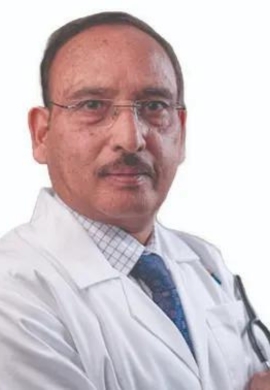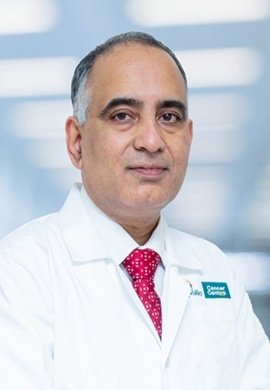Radiation Therapy in India
Consider India for radiation therapy, if you or your family member is diagnosed with cancer and needs treatment with radiation. Cancer hospitals here assure you a treatment using the same modern technologies that are used in advanced countries. The treatment here is at much lower costs.
Video Credits: International Atomic Energy Agency
What is the Cost of Radiation Therapy in India?
Radiation Therapy in India, in the form of External Beam Radiation Therapy (EBRT), can cost between 2,400 to 7,800 US dollars.
Palliative Radiotherapy costs much less, in the range of 1100 to 1300 US dollars, while Brachytherapy costs only 300 to 400 US dollars per fraction of radiation.
This price includes a hospital stay in single rooms with all essential facilities. The cost also includes a stay for one family member or caretaker.
The same treatments in the USA can cost up to 120,000 US dollars. The table below compares the costs of some types of radiation therapy in different countries to that in India.
| Country | IMRT | RapidArc® IMRT |
| Spain | $8,500 | $8600 |
| Thailand | $10,000 | $11,500 |
| Turkey | $15,000 | $19,500 |
| Korea | $10,000 | $18,300 |
| Dubai | $15,000 | $21,200 |
| USA | $30,300 | $62, 300 |
| Canada | $9,700 | $16,500 |
| Australia | $9,700 | $15,400 |
| India | $5,000 | $5,500 |
*The costs are taken from different online sources
Though the cost is much lower in India, the best hospitals here are on par with any other known and reputed hospitals in the world. The hospitals here have all modern & newer technologies and offer a similar level of medical care as in advanced countries.
Why Choose India for Radiation Therapy?
Cancer is the deadliest and the most feared disease in the world, and the word “Cancer” itself gives us chills! Your doctor may study your case and suggest Radiation Therapy as a part of your cancer treatment.
Choosing India for Radiation Therapy is worth considering for several reasons:
- India is a fast-growing and developing country. It has all the latest technology as available with any other advanced and first-world countries.
- Much lower costs of treatment.
- Excellent healthcare facilities:
- Cancer Hospitals in major cities of India such as Delhi, Bangalore, Mumbai, and Chennai have advanced cancer care units
-
- CyberKnife Surgery - A non-invasive and pain-free, robotic radiation therapy is available here
- Proton Therapy - A therapy available in only a few countries, is now available at the Apollo Hospital, Chennai
- All major Indian cities are well-connected by flights to the rest of the world, and it is easier for patients from abroad to travel
- Highly talented, well-qualified, and skilled doctors
- All doctors and hospital staff speak fluent English. So, communication is not a problem
- India is known for most popular and famous and some of the best tourist places
Besides, hospitals that care for patients from other countries have certain value-added services. They are:
- Online consultation, so no need to visit the hospital in person
- ATM facility in hospitals, so there is no cash problem
- Language interpreters, so that communication is easy between Asian and African patients
- Local SIM card, on request, so that patients can speak to family and friends back home
Why Book Your Treatment through MTC?
There are several advantages of choosing MTC for your treatment services. We work with some of the best hospitals and clinics in India. We screen them on the basis of their:
- Doctor credentials
- Track record and expertise in treating local patients and those from other countries
- Local and global accreditations
- Negotiated and low costs of treatment
These factors make sure that a patient receives a safe and as-expected and pleasant medical experience. The treatment costs also do not burn a patient's pockets and are not a burden.
Our manager takes care of your needs related to treatment, and right from your arrival at the airport.
What is Radiation Therapy?
Radiation therapy is a type of cancer treatment that uses high-energy rays to kill cancer cells. It destroys and stops the growth of cancer cells.
The treatment is used to cure cancer. It is given to the patient, either as the only treatment or along with surgery and chemotherapy.
Sometimes, it is also used to relieve a cancer patient's pain and ease other symptoms. This type of treatment is called “palliative radiotherapy”.
The Radiological Society of North America (RSNA) finds that more than 50 percent of all cancer patients are treated with radiation therapy and at some time during their cancer treatment.[1] Not only cancer, but the treatment is also useful in treating some benign tumors, such as benign brain tumors.
How does Radiation Therapy Work in Cancer Patients?
Cancer patients receive the high-energy rays as a part of the treatment. The rays destroy the cancer cells' ability to divide and grow. It does this by damaging their DNA, so that the cells are no longer capable of dividing and growing.
Radiation seems to be the most effective way of killing cancer cells that are dividing and growing rapidly. After the treatment, cancer cells cannot fight against radiation. They cannot repair the damage as effectively as healthy cells do.
Dr. Sapna Manocha Verma | Advancements in Technology of Radiation
Why is Radiation Therapy Suggested to Cancer Patients?
Radiation therapy is suggested at different times during cancer treatment. The reasons for suggesting the treatment may also be different. Some of the reasons are:
- Radiation therapy as the primary (only) treatment for cancer
- Treatment before planned surgery, to shrink the cancer mass
- Treatment after surgery, to stop the growth of any remaining cancer cells
- In combination with other treatments, such as chemotherapy
- To ease symptoms in advanced cancer
What are the Side-effects of Radiation Therapy?
After receiving radiation therapy, some patients may not have any side-effects at all, but some may have a few. Side-effects are different for different patients.
They depend upon the location of cancer in the body and the type of cancer. They also depend upon the dose of radiation and the general health of the patient.
Common side effects are:
- Skin problems, such as dry and itchy skin, blistering and peeling
- Feeling tired all the time
- Site-specific side effects:
(A) Head and Neck Cancer
- Dry Mouth
- Mouth and Gum sores, and Dental Caries
- Difficulty in Swallowing and Stiff Jaw
- Feeling of Vomiting
- Hair loss
(B) Chest region
- Difficulty in Swallowing
- Inability to breathe
- Breast and Nipple Soreness
- Stiff Shoulders
- Cough and Fullness of the Chest
(C) Stomach region
- Nausea and Vomiting
- Loose motions
(D) Pelvic and lower abdomen region
- Loose motions and bleeding while passing stools
- Leakage of urine
- Inability of men to have intercourse
- Menstrual and Vaginal problems, and/or Infertility in Women
Why Radiation Therapy Has Side-Effects and How To Cope With It?
Radiation therapy destroys the cancer cells, but in doing so, it may cause harm to the surrounding healthy and normal tissue.
One may start noticing side-effects during the second or third week after starting the treatment. It may continue for several weeks after the last treatment.
The American Society of Clinical Oncology (ASCO) says that one should not be much worried about side-effects. This is because major advances in radiation therapy have made the treatment more precise and have reduced side effects to a large extent.[2]
Since side-effects are different for every cancer patient, one should discuss with their doctors about it. They should right away inform their doctor when side-effects show up and/or become worse. Your doctor can then provide timely and proper treatment.
There may be depression and anxiety also. You can take care of yourself by:
- Resting more often and eating a healthy and balanced diet
- Being near loved ones and seeking mental and emotional support
- Not exposing yourself too much to the sun, and using body lotions, but suggested by your doctor
How Cancer Patients receive Radiation Therapy?
A unique machine delivers Radiation therapy to cancer patients. This machine produces a type of radiation therapy called the “External Beam Radiation Therapy” or “EBRT”. EBRT is also called “Photon Beam Radiation Therapy” because photons deliver the high-speed rays.
As the name implies, an external beam means rays delivered from outside or a distant source. It treats only the specific part of the body that needs treatment.
In another type of radiation therapy, the rays are delivered by a radioactive source placed inside the patient. It can be either for a little time or can be placed forever. The source of radiation here is not outside the body, but it is inside. This type of treatment is called “Brachytherapy”.
The doctor who treats cancer patients with radiation therapy is a "Radiation Oncologist". He or she makes decisions on the type of therapy and the dose the patient needs.
This decision is based on what is best suited to treat the specific type of cancer.
Dr. Vijay Reddy | Radiation therapy India
Radiation beams used in EBRT come from these three particles - photons, electrons, or protons:
(A) Photons: Most radiation therapy machines use photon beams
Advantage: Can reach tumors located deep in the body
Disadvantage: Photon beams scatter some rays along their path and get into normal tissue beyond the tumor depth. This causes some side-effects, but they go away in some time and are not much of a concern.
(B) Protons
Advantage:
- Similar to photons, protons too can reach tumors that are deep and in critical areas of the body
- No scattered radiation on path
Disadvantage:
- Because of these advantages, doctors think that proton beams might reduce healthy tissue's exposure to radiation. The result is an effective treatment and fewer side-effects.
(C) Electrons
- Electron beams cannot travel very far through the body tissues, so they are not suitable for deep tumors
- Use is limited to surface tumors such as skin cancers
Treatment Delivery by EBRT
There are many types of EBRT. All types share the same goal of delivering the highest prescribed dose, but spare the normal and healthy tissue around the tumor. The below-listed types of EBRT use photon beams:
- 3-D Conformal Radiation Therapy
- Intensity-Modulated Radiation Therapy (IMRT)
- Image-Guided Radiation Therapy (IGRT)
- Tomotherapy®
- Stereotactic Radiosurgery
- Stereotactic Body Radiation Therapy (SBRT)
Video Credits: Apollo Hospitals
1. 3-D Conformal Radiation Therapy
This is a common type of EBRT. It uses images from a CT scan, MRI scan, and PET scan to precisely plan the treatment area. This step is called “simulation”.
A computer program does the analyses of the obtained images from the scans. It then designs radiation beams that conform to the shape of the cancer mass.
Advantage: Precise shaping makes sure that although a high dose of radiation is used, normal and healthy tissue around the cancer mass is not harmed
2. IMRT
IMRT is a type of 3-D conformal treatment that uses ray beams targeted at the tumor from several directions. The only difference is IMRT makes many smaller beams.
The strength of the beams can be changed so that certain parts of the cancer mass can receive a higher dose, if required.
3. IGRT
IGRT is a type of IMRT and considered an advanced IMRT. The only difference is that IGRT uses imaging scans not only for treatment planning, but also during the therapy sessions.
The cost of IGRT in India in only USD 5,650 to 6,700 which is much lower as compared to its cost in first-world countries as well as few Asian countries known for Medical Tourism.
Advantage:
- Repeated imaging allows for radiation dose to be adjusted during treatment, if required.
- Adjusting dose can improve the accuracy of the treatment
- Helps spare normal tissue
4. Tomotherapy®
The Tomotherapy® delivery system byAccuray is a type of IMRT. It uses a machine that combines a CT scan and an EBRT machine. It works by taking images of the tumor.
The images are taken right before treatment sessions so that there is a precise focus on the tumor.
Apollo Hospitals is among the very few Tomotherapy® centers in India that provide this treatment to their cancer patients. In India, Tomotherapy® treatment is fast gaining ground because it has superior outcomes. Cancer care doctors in India prefer this treatment.
5. Stereotactic Radiosurgery
This type of treatment targets tumors in the brain and the central nervous system (CNS). It uses focused and high-energy beams to treat small tumors that have defined edges.
It is an option when surgery cannot be carried out. GammaKnife is a type of stereotactic radiosurgery.
GammaKnife is advanced and unique because it treats cancers, but does not make any cuts. It uses Cobalt-60 as radiation source. It is so precise and focused that it damages and destroys the cancer mass, but spares the nearby normal and healthy tissue.
6. SBRT
SBRT is similar to stereotactic radiosurgery, but it is used to treat tiny and isolated tumors often in the liver and lungs. It is done when surgery cannot be done because of the increased age of the patient, other health problems, and/or the location of the tumor.
SBRT uses special equipment to hold you still and calm during the treatment, and delivers a highly precise beam to the targeted area.
7. Proton Beam Radiation Therapy
This type of therapy is an advanced therapy. It uses proton beams and not photons and electrons. Protons cause lesser damage to tissues they pass through and can effectively destroy cancer cells at the end of their path.
This means that proton therapy can deliver the prescribed dose of radiation, but reduce its effects on normal and healthy tissues. Proton therapy can only be administered by a special machine.
To a large extent, proton beam therapy has got over the limitations of regular radiotherapy.
As per the experts in this area, it can cure more cancers and offer patients a better quality of life, during and after the treatment.[3]
- Southeast Asia's first Proton Beam Therapy Center, Apollo Proton Cancer Center, was started by Apollo Hospital in Chennai, South India.
- India is among the very few countries in the world that offer this treatment.
In one year, the Proton Beam Therapy machine at Apollo Cancer Center, Chennai, has treated over 100 patients from India, Saudi Arabia, and the USA.
People-centered patient care at Apollo Proton Cancer Centre
8. RapidArc® Radiation Therapy
Varian Medical Systems developed the RapidArc®. It helps the delivery machine to deliver IMRT up to eight times faster than the regular IMRT. It takes less than two minutes for each treatment to be completed.
Researchers at Varian have found that RapidArc® is suitable for quite a few clinical sites. Their studies show that it can conform the treatment beam more closely to the tumor shape and protect more surrounding healthy tissues.
Benefits:
- Short treatment time and more normal tissue spared
- Higher cure rate because of increased dose
- Fewer side effects
- Ideal for patients with prostate, lung, spine, brain, and head and neck cancers
RapidArc® also allows clinicians to deliver IGRT much faster. It is provided with various advanced imaging devices that provide images that help to guide the treatment.
Based on the input, the clinician moves the patient, so that the cancer mass is directly in the center of the treatment beam.
Benefits:
- Most treatments are under two minutes
- Improves patient comfort and eases anxiety
- Reduces the time the patient spends on the treatment couch
- High precision and faster treatment so that there is no tumor movement during treatment
RapidArc® also combines the use of both IMRT and IGRT. This can deliver treatment typically in less than two minutes with a single 360-degree rotation of the machine.
Treatment Delivery by Brachytherapy
As learned above, Brachytherapy is placing the radiation sources inside the body and as close to the cancer mass. The radioactive sources are in the form of wires, seeds, and rods.
This method can effectively treat cervical, uterine, and rectal cancers as well as eye and certain head and neck cancers.Sometimes and EBRT may be used together.
In such a case, EBRT is given to destroy cancer cells in a large area and around the cancer mass. Brachytherapy helps in destroying the main and focal dense mass of cancer cells.
There are several types of Brachytherapy. These are:
1. Interstitial Brachytherapy
- Radioactive needles and wires are put in the area of cancer
- A source may be put and taken out on the same day, or after several days. It can also be kept in the patient's body always
2. Intracavitary Brachytherapy
Radioactive sources are placed using a metal or plastic applicator in body cavities that have cancer, such as the vagina and the uterus, as well as the larynx
3. Intraluminal radiation therapy
Radiation to hollow organs of the body, such as the lumen, as in gut cancer
4. Radiation therapy given directly through the vein
Radioactive particles are given to the patient directly through the vein. A treatment called I-131 is given through the vein to treat cancer that has spread to the bones
Recommended Hospitals in India for Radiation Therapy
For the recommendation of a hospital, we consider factors such as clinical skills; availability of latest and modern technology; and expert and qualified doctors.
We also consider the fluency of doctors and other hospital staff in speaking English. Based on these factors, we suggest these hospitals in India for radiation therapy:
- Apollo Hospitals in Delhi, Mumbai, Hyderabad, Chennai, Kolkata, and Bangalore
Apollo Hospitals
Apollo hospital was started in 1983. It is now known as one of Asia’s top hospitals. The focus of Apollo Hospitals is on clinical excellence, but with lower costs, and the use of the latest and best technology. The hospital is known for launching many cutting-edge innovations in India.
Since 1983, it is trusted by over 150 million people coming for treatment from over 140 countries. The hospital has over 125 Surgical and Radiation Oncologist and Diagnostic Consultants.
The Radiation therapy unit at Apollo Hospitals can treat both large and small cancers that may be located in deep and critical areas.

Offering 52+ specialties, this JCI and NABL-accredited hospital is one of the leading healthcare providers in the city.
The hospital has cutting-edge technologies like PET-CT, Da Vinci Robotic Surgery, and 3 Tesla MRI.
- JCI Accredited
- 29+ Years of Excellence
- 52+ Specialties

The JCI-accredited hospital is the flagship of the Apollo Group and treats 20,000+ international patients annually.
With 60+ departments, this multi-specialty hospital is staffed by internationally trained medical experts and supported by dedicated care teams.
- JCI Accredited
- NABH Accredited
- ISO Certified

With a legacy of more than 20 years, AHIL is a premier destination for healthcare services in Ahmedabad, India.
With 6+ centers of excellence and 35+ specialty branches, it annually delivers clinical care to over 18,000 patients.
- ISO Certified
- JCI Accredited
- NABH Accredited

Established in 1983 by Dr. Prathap C. Reddy, Apollo Healthcare is a leading provider in the health sector.
It includes 73+ hospitals, 400+ clinics, 1,100+ diagnostic centers, and 5,000+ pharmacies. Apollo offers comprehensive healthcare services to over 120 million patients from 120 countries.
With over 11,000 doctors, Apollo Hospital ensures superior clinical outcomes and serves patients across more than 10,000 pin codes in India.
- NABH Accredited
- NABL Certified
- JCi Accredited

Established in 1988, this JCI-accredited hospital is a renowned healthcare network operating in 10+ countries.
The hospital has 16 Centres of Excellence, led by internationally trained surgeons, offering comprehensive solutions for complex medical cases.
- 36+ Years of Excellence
- ISO Certified
- JCI Accredited
- Novalis Tx
- True Beam STx
- 3D-CRT
- IMRT
- IGRT
- High Dose Rate Brachytherapy
- Stereotactic Radiosurgery
- CyberKnife
- Proton Therapy
- JCI
- NABH
- NABL
- ISO 9000
- ISO 2200 HACCP certification
Apollo Cancer Center is the:
- First hospital in India to launch Proton Therapy
- Has completed over 100,000 IMRT Sessions and over 500,000 Linac Radiotherapy Sessions
- Has over 120 referral destinations
- Assigned 750 beds to Cancer Care
Some of the cancer experts at Apollo Hospitals are:

Dr. Animesh Saha( Apollo Multispeciality Hospitals )
Dr. Animesh is a Radiation Oncology Specialist with expertise in lung, gastrointestinal, head and neck, and urological cancers.
Formerly a Consultant at Leeds Cancer Centre, UK, he also holds an FRCR in clinical oncology from the RCR.
Education
- Fellowship in Clinical Oncology, Leeds Cancer Centre, UK
- MD Radiotherapy from IPGME&R and SSKM hospital, Kolkata
Memberships
- Association of Radiation Oncologists of India
- European Society of Medical Oncology
- Royal College of Radiologists

Dr. B K M Reddy( Apollo Hospitals Bannerghatta )
Dr. BKM Reddy is a senior consultant and chief radiation oncologist.
He has led the Radiation Oncology department at several hospitals.
Dr. Reddy took HDR Brachytherapy training at MDS Nordion, Ottawa. He also attended the evidence-based radiation therapy course in Beijing.
He has won the medical innovation award from the Times of India.
Education
Osmania Medical College, Hyderabad
Memberships
- Indian Society of Oncology (ISO)
- Association of Medical Physicists of India (AMPI)
- Association of Radiation Oncologists of India (AROI)

Dr. Raja. T( Apollo Hospital, Greams Road )
Dr. T Raja is recognized as one of the top oncologists in India.
He has been the principal investigator for several high-profile cancer research trials.
He is proficient in pap collection, a key procedure in cancer screening and diagnostics.
Dr. T Raja specializes in chemotherapy, lung cancer, melanoma, cancer research, and clinical care. He received the "Best Doctor Award" from Tamil Nadu Dr. MGR Medical University.
Education
Gujarat University, India
Memberships
- Indian Medical Association (IMA)
- European Society of Bone Marrow Transplants(EBMT)
- Indian Society of Medical and Pediatric Oncology(ISMPO)
FAQs
Very much! In 2015, India ranked third in the most favored and popular places for medical tourism. At that time, 234,000 foreign tourists had visited India for medical tourism. This figure but more than doubled in 2017 to 495,056.
The Indian government has also changed some visa rules so that there are more patients visit India for treatment.[4]
Yes, there are many reasons. People prefer India for its rich culture, tasty food, and the right weather. Besides, patients mostly like to visit India for its traditional practices of healing, such as Ayurveda and Yoga. People also favor the practices of Siddha and Unani.
You need to provide full details about the cancer patient’s health records, medical and family history, and current therapy, etc. If you are referred by any doctor, we suggest you bring along the contact details of the doctor when you are here.
Yes, you can. You can fill up your contact details here and provide details about your illness. We will then set up an appointment with the radiation oncology doctor.
Based on the inputs from the radiation oncology doctor, we will provide you with a complete plan. The plan will include details on the length of stay and the costs, and necessary before and after- treatment care packages.
You need to produce your/ patient’s passport. The hospital needs to store a copy of your passport and the visa page in the patient’s hospital records. The Government of India has made this step mandatory.
Usually No! But you should let your therapist know right away, if you feel discomfort while receiving the treatment.
That depends upon your treatment plan! Your radiation oncology doctor will best explain this to you in detail. In general, five consecutive days a week is the treatment schedule.
Radiation therapy causes hair loss only at the body part that has received radiation. This means that if you receive radiation at your leg area, then you will lose hair on that leg only, but not hair on your head.
No! You will not be radioactive after the treatment ends. The radiation that you receive does not stay in your body.



